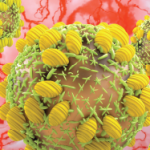The results led the authors to suggest that targeted manipulation of T cell exhaustion may lead to new therapies for autoimmune disease. “We know that the way our bodies respond to infection and to autoimmune diseases differs between individuals. In part, we believe this is due to a process known as T cell exhaustion. For effective treatment, we need to exhaust our T cell responses in autoimmune diseases—and hence limit the attack on our body—and to reverse exhaustion when the fight is against unwanted invaders, such as viruses or cancer,” said Dr. McKinney in an accompanying press release.
Lara C. Pullen, PhD, is a medical writer based in the Chicago area.
ad goes here:advert-1
ADVERTISEMENT
SCROLL TO CONTINUE
References
- McKinney EF, Lee JC, Jayne DR, et al. T-cell exhaustion, co-stimulation and clinical outcome in autoimmunity and infection. Nature. 2015 Jun 29. doi: 10.1038/nature14468. [Epub ahead of print]
